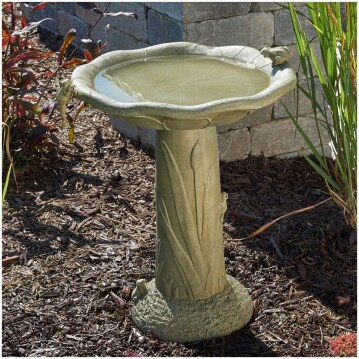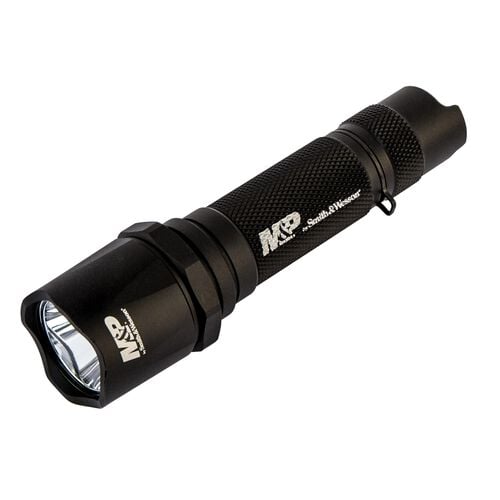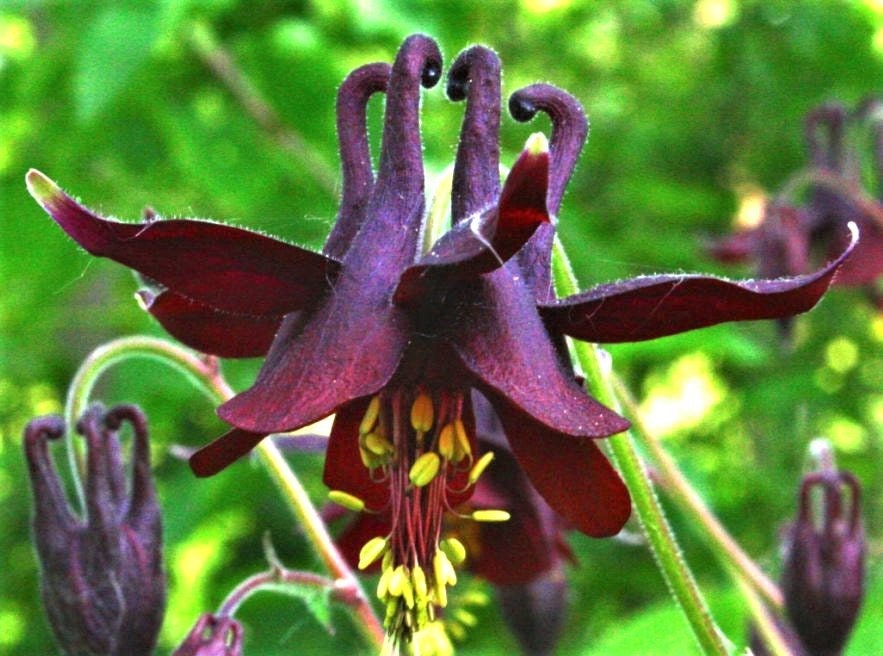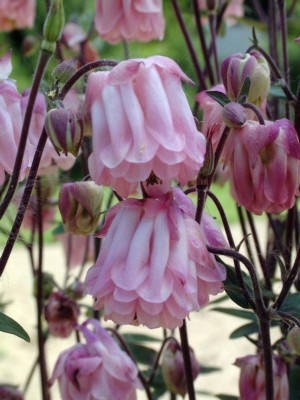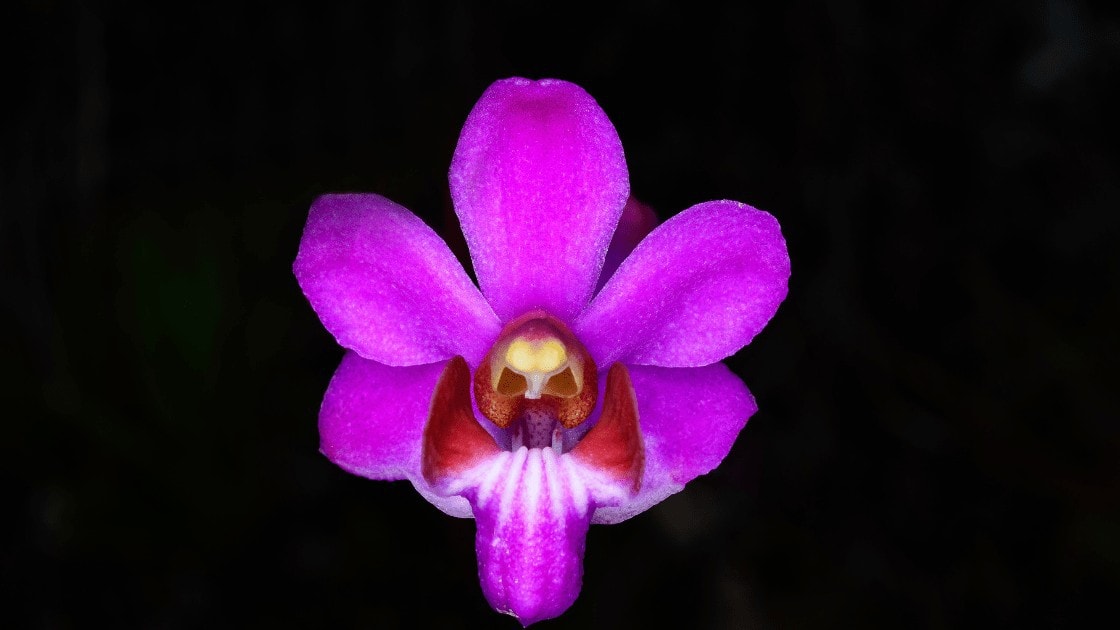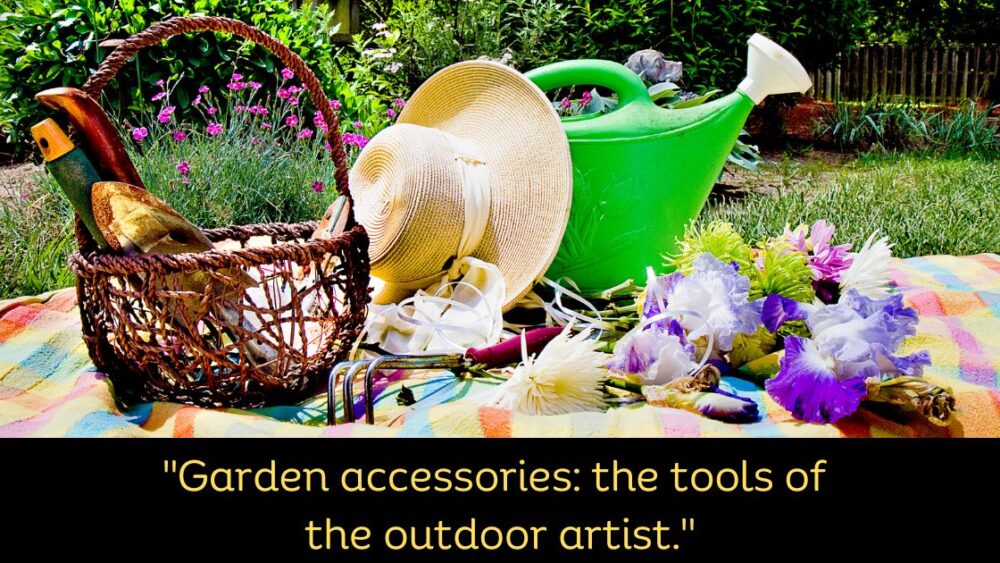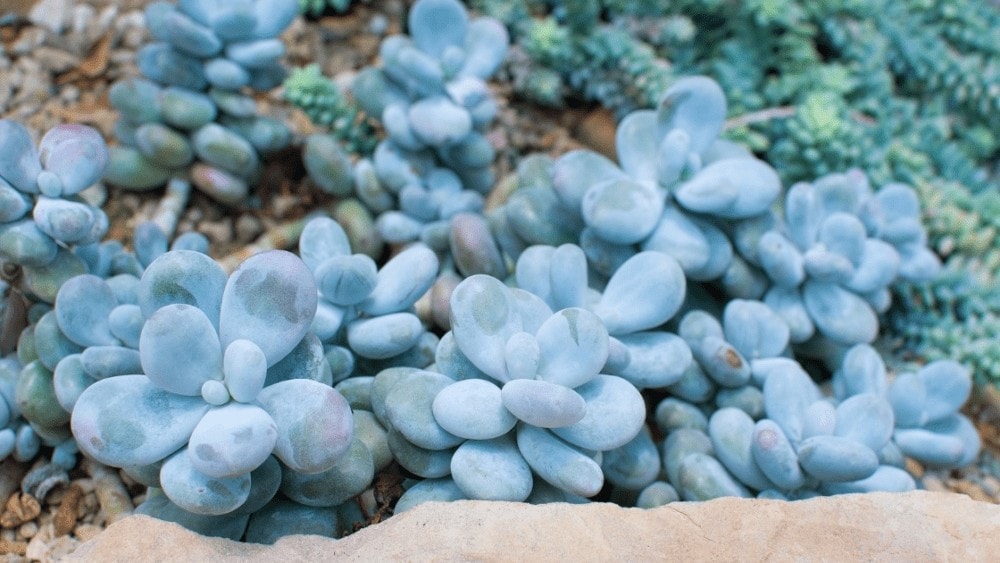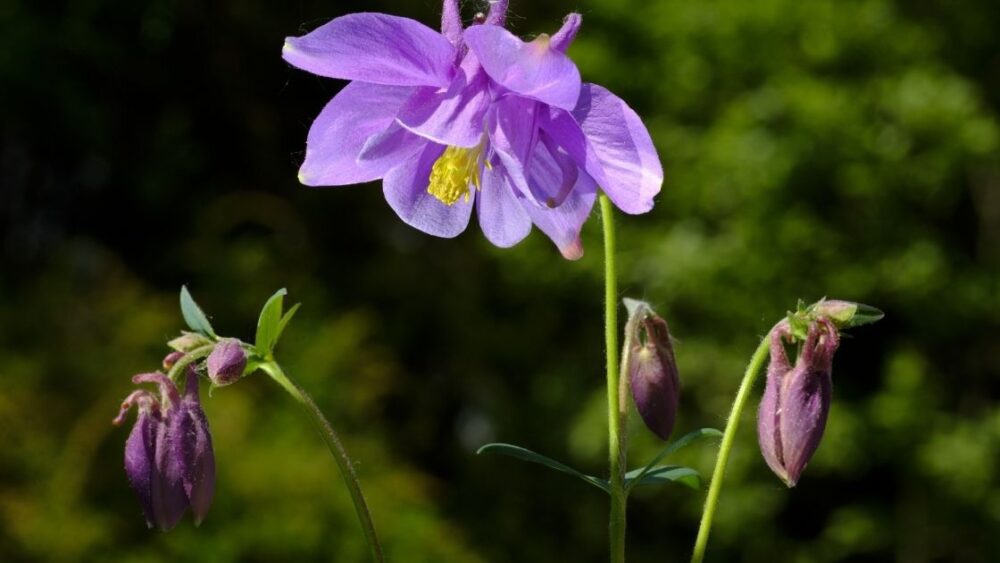
Columbines (Aquilegia) are one of the hardiest and most resilient flowering plants – they can withstand severe frosts without a protective mulch layer. They also do surprisingly well in shaded spots. They are very easy to start from seed and self-seed readily, making them perfect for novice gardeners and people who like low-maintenance gardens. The only drawbacks of columbines is that they only bloom for a short time (20-30 days) during late spring and often start losing a lot of foliage as soon as the hottest summer months arrive.
What Can Cause Columbines to Not Bloom?
Columbines don’t typically have a problem blooming. However, when started from seed, they won’t bloom during their first year. Poor growing conditions, compacted soils and pests may also prevent blooming.
Those causes almost always have additional symptoms, like poor growth, yellowing of the leaves or wilting. Let’s go over the possible reasons your columbines may be refusing to bloom:
Browse our Affiliate Products
First-year plants grown from seed
Columbines are usually sown during the autumn or winter, as their seeds germinate best after a few weeks of cold exposure. This means that when the blooming season (spring) arrives, the plants will still be too small and young to flower.
During the summer, columbines will form thick, almost bulb-like roots, which they will fill up with sugars and proteins. Those nutrient reserves will be used for blooming during the next spring, after which the plants should continue to bloom consistently year after year.
Too much nitrogen
Applying fertilizers too high in nitrogen will cause the plant to direct most of its energy towards foliage development. Nitrogen-heavy fertilizer will not typically prevent flowering on their own, but can certainly do so in combination with other factors, such as light deficiency or an unsuitable soil. The bloom-preventing nitrogen exposure may come from lawn fertilizers, applied in close proximity to the columbine plants.
Unsuitable/poor soil
Columbines grow best in soils that aren’t too compacted or soggy – they prefer the surface of the soil to be almost completely dry most of the time. They can still absorb enough water with their deep roots. Soils with constant surface moisture may lead to too much ammonia accumulation, which can lead to stunted development and can prevent flowering. Yellowing leaves are another sign of too compacted soil.
Severe light deficiency
Columbines do well in dappled shade, or even in full shade. However, they do require a lot of indirect sunlight. Planted in spots that have too many light-blocking obstacles (dark walls, trees or other plants), they may be unable to accumulate enough nutrients during the summer to bloom the following spring.
Other factors
- Heavy fungal infestations and insect pests may stunt the growth of the plant too much and completely prevent flowering. Those sort of problems can be easily diagnosed by visual inspection – the damage to the lower leaves is usually very obvious.
- Columbines are northern-hemisphere plants that are used to cold winters. In the absence of a cold season, they may bloom unexpectedly or may refuse to do so.This is variety-dependent.
- Sometimes, the cause remains a mystery, or comes down to too many environmental factors interacting with each other. Root rot or root fungal diseases may remain hidden and be difficult to notice.
- Lack of patience may sometimes cause you to wrongly assume that the plant won’t bloom, when in fact it may simply be too early. Sometimes, columbines flower in early summer or even in mid-summer in colder locations.
How to Make Columbines Bloom
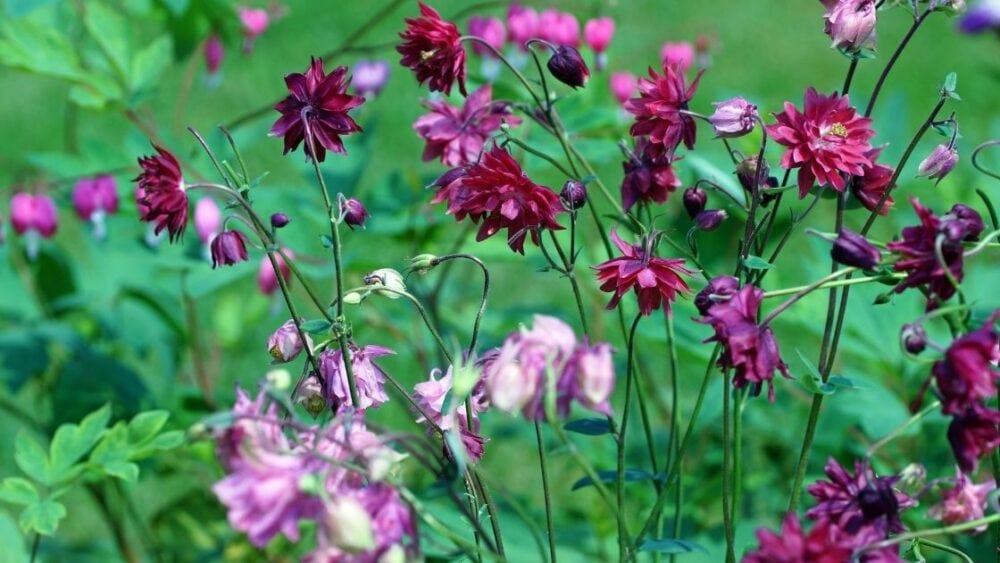
There isn’t much you can do to force columbines to bloom in the short-term. That’s because the lack of flowering usually comes down to previous-year factors and lack of nutrients accumulated in the roots. However, there are a few things you can try:
- Apply a phosphorus-rich fertilizer Those fertilizers are usually sold as a ‘fertilizer for flowering plants‘ – phosphorus is known to stimulate flowering and to reduce the bloom-suppressing effects of high nitrogen levels.
- Increase light levels – If a columbine plant is not forming flower buds during late spring, increasing the light intensity may help initiate blooming. This is particularly true for plants that have spent the previous season in a light-deficient spot and lack nutrient reserves in their rhizomes. Light levels can be increased by removing obstacles, using white surfaces as reflectors or moving the plants around.
- Foliar feeding with organic fertilizers – Foliar application of organic fertilizers may sometimes help initiate flowering in stubborn or deficient plants. Synthetic NPK fertilizers contain mineral nitrogen and no carbon. This still requires the plant to manufacture a lot of energy to assemble the nitrogen into proteins. On the other hand, organic fertilizers (like compost tea) often contain some free amino-acid nitrogen and some carbohydrates, which are immediately utilizable by the plant.
Do Different Varieties Have Different Blooming Habits?
There are more than 50 different species and varieties of Columbines. European varieties may experience a ‘mid-summer dormancy’, triggered by excessive heat. This is not completely absent in North American varieties, but they are usually more tolerant to higher temperatures.
This dormancy may cause a loss of foliage shortly after blooming, which may negatively affect the flowering during the next season. This loss of foliage can be delayed or completely prevented by avoiding direct sunlight exposure during the hottest months.
Optimal Growing Conditions of Columbine Flower (Aquilegia)

Columbines are very easy to care for and self-seed readily. They are one of the plants with the lowest maintenance requirements, especially when planted in a suitable soil.
How much sunlight do they need?
Direct sunlight will lead to the fastest development, but this plant doesn’t tolerate high temperatures very well. This is especially true for European varieties, which may experience complete loss of the foliage during high heat.
Because of this, columbines are usually planted in partial shade or even in full shade. A spot that receives direct sunlight in the first few hours of the day (when it’s colder) and full shade during the rest of the day is ideal but not always possible.
What temperature does columbine flower grow best at?
High temperatures will tend to cause a lot of foliage loss and burnt spots on the edge of the leaves. The degree of this heat-sensitivity is variety dependent, but ultimately all varieties are heat-sensitive. The problem usually starts at around 85F (30C) During the winter, columbines will survive almost any frost – they are hardy down to USDA zone 3.
What type of soil is required?
Aquilegia species aren’t too picky about the soil. However, compacted and soggy soils will often lead to problems with stunted growth and stem base rot. The more compacted the soil, the less frequently should you watered. If your area experiences frequent rains, using an airy, well-draining soil is a must. This applies to most other garden plants as well – only a few flowering species, like primulas can tolerate a soil that is constantly soggy and lacks air.
How often should you water?
Foliage wilting is the best indicator that your columbines should be watered. Keep in mind that paradoxical wilting can also occur – it happens immediately after watering and is caused by root drowning. Weekly watering works well for most situations and climates. After a heavy rain, you may skip watering for up to 10 days. Potted specimens may need to be watered as much as twice a week, depending on the pot size.
Planting in pots vs. directly outdoors
Columbines are short plants that can be successfully grown in containers. However, this will greatly reduce the frost tolerance of the plant, because of the exposed sides of the container, causing it to reach much lower temperatures at night. The main advantage of pots is that you can re-arrange them – for example, you can move them to your patio during the spring. Burying the potting containers to level with the ground during the winter will prevent the roots from freezing and getting damaged.
If your looking for other wild flowers that can be grown by throwing seeds, check out our article here. Do Wildflower Seeds Grow if I Throw Them on the Ground?
Can you grow columbine flower indoors?
Columbines can be grown indoors, which will prevent most the summer foliage loss, caused by high outdoor temperatures. However, considering their hardiness and ability to self-seed easily, those plants are mainly suited to outdoor cultivation.
For other varieties of wild flowers, check out this article. The Colorful Perennial Primrose: Plant, Grow, and Propagate Guide
Best Companion Plants for Columbines
The blooming period of columbines only lasts for 20 to 40 days during the late spring. It makes sense to combine them with plants that bloom later in the season, to achieve seamless flowering throughout the warm months.
Foxgloves usually bloom immediately after the columbines, during early summer. Daisies and Geranium will bloom afterwards, during midsummer and finally, Coneflower, Asters and Sedum will bloom last, at the end of summer.
For more information on Daisies, check out this article. How Do You Save an Overwatered Gerbera Daisy?
What to Do if Your Columbines Aren’t Doing Well?
Here are a few causes to consider if your columbines look sick or aren’t growing properly:
- Make sure that the basic requirements of the plant are met and it receives plenty of light. Apply a dilute fertilizer and see if that helps.
- Too frequent watering may stunt the growth of this plant and the leaves may start yellowing. Make sure to allow for a short drought period between waterings.
- In high heat, European varieties may enter dormancy and lose most of their leaves – there isn’t much you can do to prevent this. North American varieties are also prone to this phenomenon, but are slightly more resistant to high temperatures.
- Pests and fungal infestations are common in columbines and shouldn’t necessarily be dealt with. Leaf miners can be extremely hard to prevent, even with strong insecticides. They are a natural part of the life of columbines and don’t necessarily pose a big thread to them.
- Although Aquilegia is a perennial plant, many gardeners have reported that their plants only live for a few years. It’s not clear whether this is caused by old age or by too much frost damage.
Just keep in mind that you may have to re-start your columbine garden from seed at some point. Naturally, columbines self-seed, but if you pinch off all flowers as soon as they start to wither away (which is commonly done to extend the flowering period), seeds won’t form.
Final Thoughts
Flowering issues are not common in Columbines (Aquilegia), but when started from seed in the fall, this plant almost never blooms during its first year. There is not much that can be done to stimulate flowering, except for applying a phosphorus-rich fertilizer and giving the plant more optimum growing conditions.


